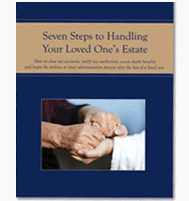Bay Area Estate Planning: What You Should Know About Joint Ownership and Its Alternatives
 Joint ownership in layman’s terms is synonymous with co-ownership. If a property is owned by more than one individual, it is referred to as being held in joint ownership.
Joint ownership in layman’s terms is synonymous with co-ownership. If a property is owned by more than one individual, it is referred to as being held in joint ownership.
What is the Advantage of Joint Ownership as an Estate Planning Method?
One of the major advantages of joint ownership of an asset is that it can avoid California probate. In other words, when one of the joint owners of the asset or property dies, the property or asset passes easily to the other joint owner without having to go through the courts. The implementation of this type of asset transfer is straightforward and inexpensive.
What are the Various Types of Joint Ownership?
There are several types of joint ownership such as community ownership, joint tenancy with rights of survivorship, tenancy-in-common, and tenancy-by-the-entirety. We will look at two of the major types of joint ownership in this blog post.
- Joint Tenancy with Right of Survivorship
Joint tenancy with right of survivorship is simply a type of joint ownership whereby each of the participants or tenants possess an equal interest in the asset or property. Under this type of joint ownership, one tenant cannot possess 60% and the other tenant 40%. The tenants must possess equal interest, and their names and interest must be clearly outlined in the deed.
The advantage of this type of joint ownership over tenancy in common is that upon the passing of one of the owners, their interest or part of the asset is automatically handed over to the other owner, outside of probate. This is done notwithstanding what is stated in the deceased’s estate planning documents.
- Tenancy-in-Common
Under tenancy-in-common, ownership is usually between two or more individuals. While ownership interest may be shared equally, it isn’t compulsory.
Tenancy-in-common type of ownership allows the various parties the right to sell or transfer their share or interest of the property without requesting the permission of the other owners. If one of the owners dies and the property or asset was held in their name, the ownership right doesn’t go to the other owners but to the heirs of the deceased owner.
Before Choosing to Own a Property Jointly, Talk to a Bay Area Estate Planning Attorney
There can be disadvantages to owning property or assets jointly, and this type of strategy is certainly not without risks. For this reason, it is important to discuss your goals and family dynamics with a Bay Area estate planning attorney before you make any financial decisions about how to hold title to an asset or piece of property that you share with someone else. If you would like to talk about your options and explore possible alternatives to joint tenancy here in California, we invite you to contact our Bay Area estate planning law firm at (650) 422-3313 to schedule a consultation






